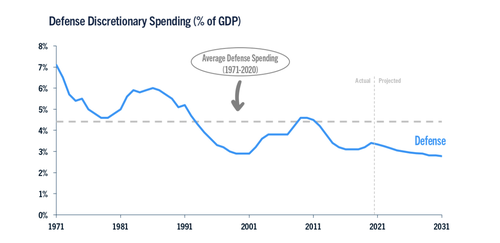
It's D-Day 2022... Where's the Russian-Ukraine War?
y American Consequences / Kim Iskyan
It's here: D-Day 2022... the day that Russia was to invade Ukraine, according to President Joe Biden.
"Putin could attack Ukraine on February 16, Biden told allies," Politico reported on Friday. "America warns of an imminent invasion of Ukraine," the Economist warned on Sunday.
Today is that day, at least according to the brilliant minds of the American intelligence agency who tell Joe Biden what to think.
But... crickets. No bombs, no troops, no tens of hundreds of thousands of troops marching across the border.
It might be the geopolitical analogue of Heisenberg's Uncertainty Principle: As soon as the president of the United States says Russia will invade Ukraine on February 16... Biden is changing the probability of it happening then. And sure enough, it didn't happen.
And of course, Russia could still kick of WWIII... there are plenty of reasons why it might.
But the U.S.-mandated deadline has passed. Meanwhile, the credibility of the American government's "a stopped clock is right twice a day" approach to foreign policy – remember the weapons of mass destruction that launched the Iraq war in 2003? – is vanishing as fast as the frozen Ukrainian ground is thawing right now.
It almost makes you think that the U.S. wants war... as if it's pushing Russia to invade Ukraine. Say "this is going to happen" often enough – and sooner or later, you might help make it happen.
Ukrainian President Volodymyr Zelensky said as much in late January when he called on Western leaders to not create uncertainty and instability by repeatedly warning of war. "We don't need this panic," he said.
So it's worth asking the question... Why would America want war?
Politicians sometimes hype external threats if they're facing political challenges or low approval ratings domestically. Nothing brings a nation together – and bolsters a politician's support or odds of reelection – like the "rally 'round the flag" effect that's created by conjuring up an external threat. Russia threatening the peace of the free world would qualify.
And Joe Biden's average approval ratings, just last week, fell below 40% for the first time. For the head of party that's facing the prospect of a Congress-flipping midterm election in less than nine months, that's bad – presidential-term-extinction bad – news. And maybe even worth-starting-a-war-over-to-gain-support bad.
Then there's the gaping hungry maw of the American military–industrial complex. The war in Afghanistan ended less than six months ago, closing the books on the War on Terror and its $8 trillion meal ticket for the military and defense industries.
The Peter G. Peterson Foundation forecasts a continuation in the long-term decline of discretionary defense spending as a percentage of GDP. That's dark days for the countless communities, counties, states, companies, congressional districts, jobs and lobbyists who count on the $778 billion in federal defense spending (in 2020).

The military-industrial complex needs a new enemy. So why not rip a page from the good old days, and bring back the son of everyone's favorite bad guy, the Soviet Union? Nothing says "higher defense spending" than ramping up for a ground war in Europe against the Russians.
And even though February 16 is here and passing... the threat isn't going away. As the American press has reported for the past two decades, Russian President Vladimir Putin – to repeat the tired words of Winston Churchill when he spoke of Russia – is "a riddle, wrapped in a mystery, inside an enigma." But who knows, right?
Maybe D-Day didn't happen this time... but it will soon. For real, this time. And in the meantime, we'd better get ready.
Editor's note: No matter what happens in Russia, this one misunderstood asset can help keep your portfolio safe.
It will benefit when – not if – war eventually breaks out. And it can serve as an important hedge for the long-tail, "just in case" scenarios... like a banking crisis, a cyberwarfare attack, or hyperinflation.
https://www.zerohedge.com/news/2022-02-16/its-d-day-2022-wheres-russian-ukraine-war
